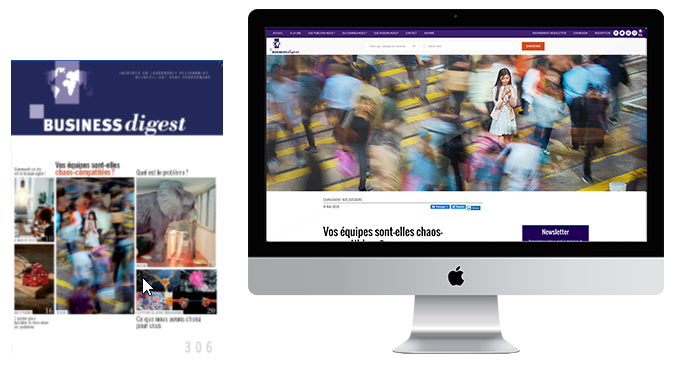Adidas: Putting employee experience at the heart of corporate strategy
Adidas’s mission has not altered much since the company was founded 70 years ago: “Using sport to change the lives of millions of people around the world”. At the same time, the new competitor landscape is forcing Adidas to re-evaluate its historical rigidity. The main challenge for the company since 2015 has been to transform itself into an experiential company driven by culture rather than strategy.
Karen Parkin took over as head of Adidas HR in 2014, when the sportswear manufacturer was still stuck in the twentieth century. The company was inward-looking, focusing on its own sector and its traditional know-how and cutting-edge technologies, while largely ignoring its customers and, even more so, its employees. In other words, Parkin joined Adidas at a point in its evolution when it had yet to catch up with the global shift in the competitive landscape in terms of talent management. Flash forwards 3 years, and Adidas (alongside traditional rivals such as Nike and Puma) is now competing with companies including Google, Amazon and Facebook for recruiting and retaining the best employees. As Parkin notes, companies need to have the best talent in the best seats if they want to boost agility and tackle today’s rapidly-changing environment — and this is exactly the challenge of employee experience.
Putting talent to work for strategy: “creating the new”
Adidas’s executive committee launched an innovative strategic 5-year plan in 2015, “Creating the new”, based on three key objectives: speed (giving customers immediate solutions); cities (doubling the turnover in 6 major world centers: Los Angeles, New York, London, Paris, Shanghai and Tokyo); and open source (inviting athletes, artists, consumers and partners to build the brands of tomorrow alongside Adidas). For the first time in the group’s history, this strategic plan is being driven primarily by a new HR policy around employee experience. “Our goal is to make Adidas a leader in its market based on our culture rather than our strategy,” explains Parkin, who has expanded the opportunities for stimulating 2 key values — creativity and curiosity — among Adidas’s 60,000 employees.
Aligning the physical environment with the targeted cultural transformation
In its attempt to enhance employee experience, Adidas invested several million dollars in 2015 to radically redesign the way workspaces are organized in the group’s German headquarters. Adidas is trying to develop a work environment that stimulates creativity, with physical spaces playing a critical role. The most obvious example of the impact of the environment on behavior is collaboration: it is impossible to create the conditions for collaborative work if all the doors are shut. To stimulate exchange, Adidas has invested heavily in what it calls “collision points”: areas where employees can meet spontaneously to exchange ideas while they move about the building. Similarly, it is impossible to spark the curiosity of your staff and encourage them to share ideas if the offices are not adjustable.
[highlight_box title=”Biographie” text=”Karen Parkin was appointed chief HR officer at Adidas in November 2014. Parkin has spent over 20 years with the German company, mainly in commercial roles. She joined Adidas’s executive committee in early 2017.” button=”LABEL_BOUTON” button_url=”URL_BOUTON” img=”https://business-digest.eu:443/wp-content/uploads/2017/11/BD280Parkin-3.jpg”]
Excerpt from Business Digest N°280, October 2017
Based on “Exploring And Implementing The People Strategy At Adidas” by Jacob Morgan (The Future Organization, novembre 2016) and L’Expérience Collaborateur: Faites de vos employés vos premiers fans ! by Corinne Samama (Diateino, October 2017).
© Copyright Business Digest - All rights reserved

